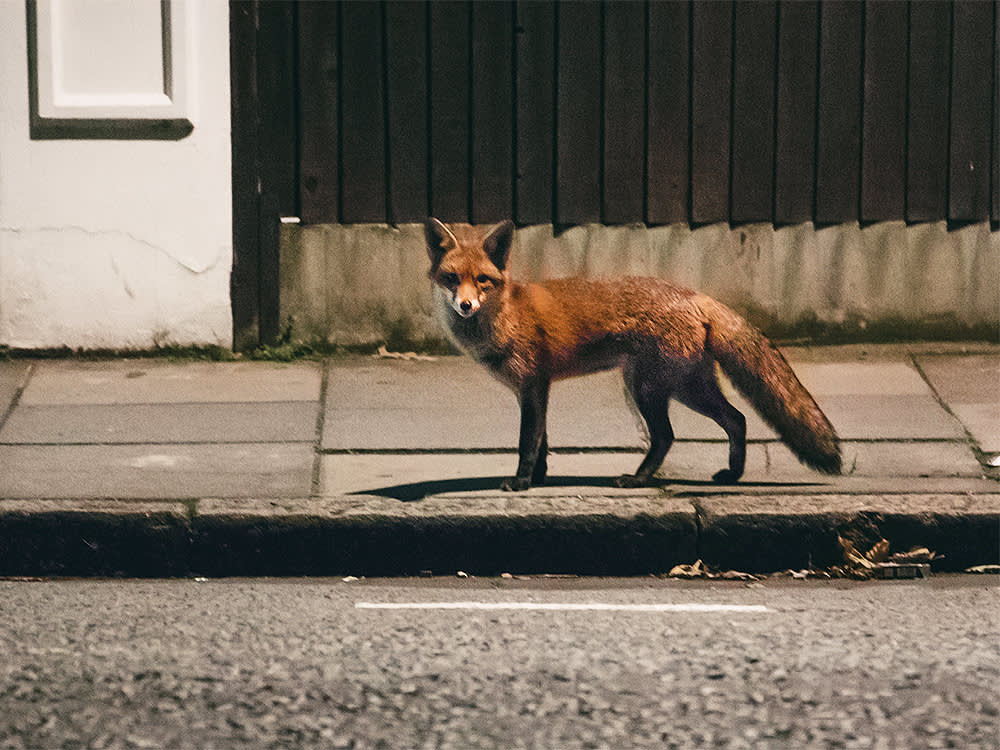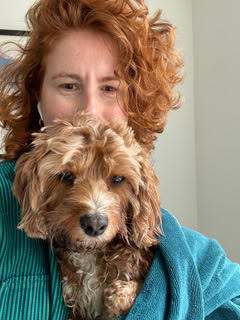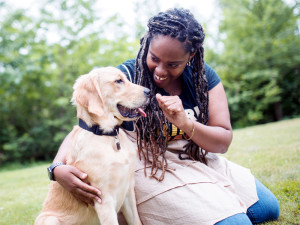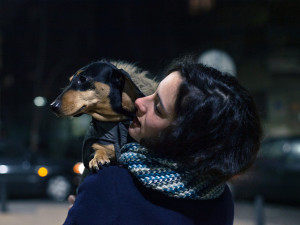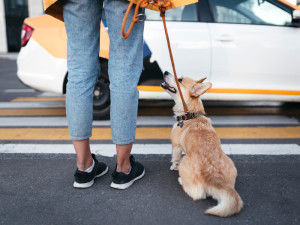Friend or Foe? Reassuring Your Dog Around Foxes
What to do with a dog who gets rowdy near foxes? And is it even safe for my dog to be near them?
Your dog can play a wonderful part in improving city living; helping you find the greenery on your walks, provoking rare smiles from city-hardened strangers and helping you to take it easy in a place where the pace is always go go go.
However, cities are also home to a lot of foxes, who, thanks to their strong scent and nocturnal scavenging, can make some dogs quite excitedopens in new tab.
Not only can dogs be tempted to roll in a fox’s scent, but they can get incredibly agitated when they smell a fox, which can make walking dogs, particularly at nightopens in new tab, a challenge.
My three-year-old Cavapoo Roo, while pleasantly well-behaved during the daytime, gets very overexcited when she gets a sniff of a fox, jumping up at the door to be let out, tugging hard on her leadopens in new tab and, if off-lead, pelting like the wind towards these mysterious creatures. And when foxes, not exactly known for their subtle lovemaking noises, screech their way through mating season, she growlsopens in new tab very loudly.
So, what to do with a dog who gets rowdy near foxes? And is it even safe for my dog to be near them? We spoke to Vanessa Bsirksy, a puppy trainer and behaviour consultant from London-based company Jack’s Mum Dog Trainingopens in new tab to find out. First of all, though, let’s explore more about foxes.
What are foxes?
Foxes can look similar to dogs and grow as big as a medium dog, like a Springer Spaniel, Irish Terrier or Beagle. More technically, foxes are canids, the same group of mammals as dogs. Foxes live up to 15 years and eat a variety of foods, from small animals and plantsopens in new tab to worms, insects, berries and humans’ food waste.
According to the RSPCA, there are up to 357,000 foxes in Britainopens in new tab, and most foxes live in urban areas where, as scavengers, they have better access to discarded food waste. They are also primarily nocturnal, which means they are most active at night.
Is there a difference between city and country foxes?
There are far more city foxes than country foxes. Although the wilds is where most feral animals would find their home (Animals of Farthing Wood anyone?), cities and suburbs provide foxes with far more dining opportunities. Think bins, dropped food, fly-tips and so on, which basically provide foxes with ready-made meals. Sheds and other garden furniture also provide decent shelter. Foxes eat better, live better and breed more prolifically in cities. City foxes are in no way more or less evolved than country foxes, but they may be more used to other animals and humans existing on their patch, known as a home range.
Will foxes attack dogs?
There have been some tragic cases where foxes have attacked dogs, particularly small and/or young dogs, but these incidents are very rare, and only happen when the fox feels threatened. The solution is for your dog to be calm around foxes, and keep a distance.
“Dogs are social animals, but foxes are shy. And it’s very rare for foxes to actively pursue a dog and attack it.” explains Vanessa Bsirsky. “Where we need to be careful, is when dogs are coming close to fox cubs.” Fox parents, like most parents, can be very protective.
First, deter foxes from coming close to your property by, “making sure your rubbish is secure, making sure your garden is fenced and if foxes are invading your gardenopens in new tab, contact a local fox charity or your council.”
Should foxes turn up, Vanessa says, “Don’t just let your dog out into the garden and hope for the best. Yes, I’ve seen a puppy play with fox cubs, but that’s unusual. Because both dogs and foxes can be very territorial.”
It’s better that your dog learns how to adapt to foxes, not the other way round, partly because the dog has domestication on its side. Vanessa explains: “there are no leads on foxes and no one is controlling them, but you can control your dog.”
How to reassure your dog around foxes
First, avoid foxes if you can. Vanessa recommends avoiding long walks at night and that you cross the road earlier to move away as soon as you see the fox. Although dogs’ sensitivity for smellopens in new tab is incredible – they have up to 300 million scent receptors compared to humans’ six million – where there is a crowd of competing smells (hello city life), humans can sometimes see a fox sooner than a dog can smell them, so reroute accordingly.
When indoors and faced with fox noises that are arousing your dog, try to mask them with some white noise, or even noise from the radio or TV, so as not to agitate your dog.
If your dog is afraid of foxes and you do encounter one, “make sure you stroke your dog slowly and your breathing is calm, because sometimes I see people trying to reassure their dogs, but they’re so nervous themselves that they wind the dog up more!”
As well as confidence, you need patience, Vanessa continues: “You don't want your dog to go into that really sort of hyper mode where things escalate, so if your dog really struggles around foxes, and they're really pulling on the lead, focus on lead work.”
To do that, recall is vital. “If you teach them a really good recallopens in new tab, and a change of direction, you will then be able to employ that for reassuring.”
How to train your dog to not react to foxes
The best way to keep your dog reassured is to “practice things for the situation, not in the situation.” Vanessa stresses.
And the idea is to ensure your dog knows ‘environmental neutrality’, explains Vanessa. This means “dogs that can be friendly with other dogs but can ignore the hell out of other dogs. Because if your dog can’t ignore other dogs when going from A–Z, what hope is there for them to ignore a fox?”
Start small, then build up. “Avoid contact with foxes while you work on really strong recall. Make it super rewarding for the dog to come back to you, so that when they do, you make it rain with sausages, you play a game of tug. Be super excited, teach them you’re their best friend.”
This will encourage your dog to respond to your call, making it easier for them to rapidly return to you.
As for puppies experiencing fox-related terror, “don’t expose them to difficult situations too quickly. Don’t lead them into a situation they can’t cope with, let them take baby steps. If you’re patient and structured, you’re building a bond of trust and teaching your dog that you are a person who leads them to safety.” Which means when they’re grown up and chasing after foxes? You can call them back with fewer problems.
